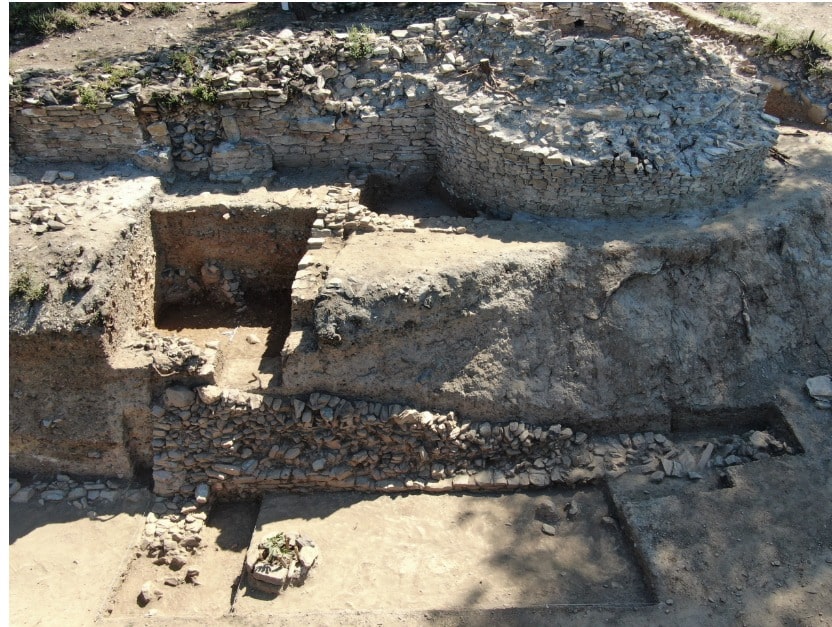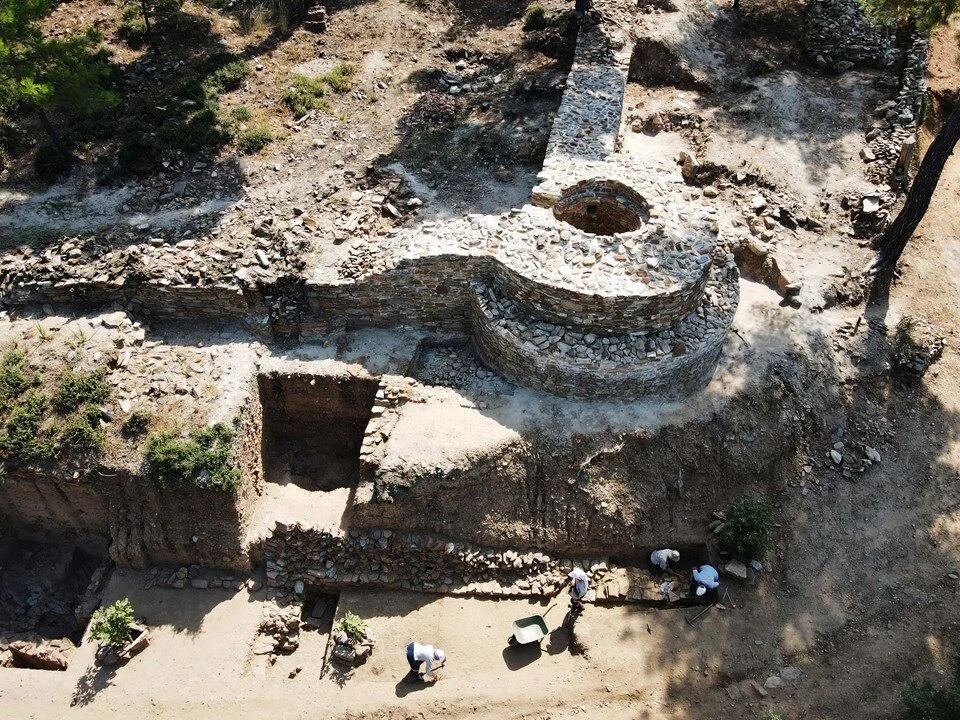
In excavations in region referred to as ‘Wallarima’ in Hittite texts, traces of settlements dating back 4,000 years discovered
In the excavations ongoing for 2 years at Asarcık Hill in the Kavaklıdere district of Muğla, findings related to the Hittite Civilization and the Middle Bronze Age have been obtained.
The excavations at Asarcık Hill, where traces of the Anatolian Seljuk period settlements have also been reached, are continuing under the scientific supervision of Assoc. Prof. Dr. Bekir Özer, a faculty member of Muğla Sıtkı Koçman University.
Bekir Özer, who mentioned that the name of the region is mentioned as Wallarima in 3,500-year-old Hittite Empire texts, said, “The settlement traces located on a fairly steep hilltop have been constantly destroyed in subsequent cultural periods. Therefore, the layers that make up the cultural continuity of Asarcık Hill have reached the present day with extremely limited data, except for the Middle Ages and Early Hellenistic Period.”

Özer, stating that cultural layers dating back 4,000 years, known as the Middle Bronze Age, have been uncovered, said the following: “The living traces of the 2nd millennium are represented by the foundations of spaces where stone and adobe were used as building materials. These spaces are associated with material culture components, mostly consisting of pottery, occasional stone tools, and signs of weaving. The presence of ceramics linked to the Coastal Aegean and Inner Western Anatolia between 1200 BC and 330-320 BC indicates the continuity of settlement. In some cases, remains of Iron Age walls, well-preserved on the eastern and southern slopes of the hill, associated with this period, can be observed.”
“The last cultural period encountered on the hill is related to the Middle Ages. Today, anyone who comes here is met with towers, sometimes reaching a height of 3.5 meters, supported by walls that are 2.5 meters high and 2 meters thick. The interior of the defense system has a very dense architectural texture. Some of our work in certain areas and excavations in the section with gates on the wall, in particular, indicate that the hill suffered a fire in the first half of the 13th century AD. This data does not surprise us because it should be seen as concrete archaeological evidence of the region’s conquest by Turkish raids coming through the Menderes Valley. Therefore, the region where Asarcık Hill is located has been one of the mandatory transit routes for all powers that wanted to dominate southwestern Anatolia throughout the ages. This situation has also contributed to the formation of the archaeological heritage that has reached us today.”
You may also like
- A 1700-year-old statue of Pan unearthed during the excavations at Polyeuktos in İstanbul
- The granary was found in the ancient city of Sebaste, founded by the first Roman emperor Augustus
- Donalar Kale Kapı Rock Tomb or Donalar Rock Tomb
- Theater emerges as works continue in ancient city of Perinthos
- Urartian King Argishti’s bronze shield revealed the name of an unknown country
- The religious center of Lycia, the ancient city of Letoon
- Who were the Luwians?
- A new study brings a fresh perspective on the Anatolian origin of the Indo-European languages
- Perhaps the oldest thermal treatment center in the world, which has been in continuous use for 2000 years -Basilica Therma Roman Bath or King’s Daughter-
- The largest synagogue of the ancient world, located in the ancient city of Sardis, is being restored











Leave a Reply